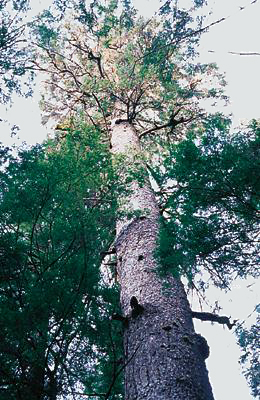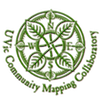

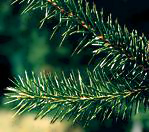
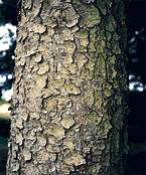
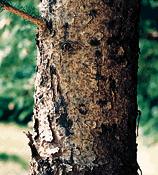
Picea sitchensis common names:
Sitka spruce, coast spruce, Menzies spruce, sequoia silver spruce, tideland spruce, Western spruce, yellow spruce, West Coast spruce
Picea sitchensis First Nations names:
Kiid, kiidaay (Haida), Shéiyi (Tlingit), Naparpiaq (Chugach, Alutiiq)
Identification:
Picea sitchensis is a large coniferous tree in the Pinaceae family, commonly growing up to two meters across and seventy meters tall. Leaves are four sided but slightly flattened needles that are attached by small pegs spirally along the twig; they range from green to bluish-green and are stiff and sharp. Cone colours ranges from reddish- to yellowish-brown and hang from crown, with seed scales thin, wavy and irregularly toothed; pollen cones are red. Bark is very thin, breaking into individual scales with age, and is brown or purplish grey.
Local habitat and distribution:
Picea sitchensis grows in coastal forests with western hemlock, western redcedar and yellow cedar. The forest floor is usually thick with mosses, horsetails, blueberries and deer fern.
Picea sitchensis is found along the west coast of British Columbia rainforest in a narrow band from sea level to approximately 700 meters. It is most common along river and stream flood plains and the coastal fog-belt
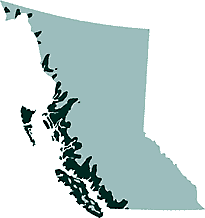
Ethnobotanical uses:
The roots of Picea sitchensis are used to create watertight hats and baskets, ropes, twine and fishing lines. The inner bark is a good source of vitamin C and also can work as a laxative. Pitch can be eaten, used as a caulk, applied for waterproofing boats, harpoons and fishing gear, applied topically as a salve to burns, boils and other skin ailments to speed the healing process, and used as a plaster to set broken bones. The wood is very light, soft, flexible and relatively strong, being used for First Nation technology. The needles can be boiled to make an antiseptic wash, and the volatile oils within the needles provide antifungal properties. Click here to view a presentation showing the process of making an anti fungal and antiseptic salve from Sitka spruce and Western redcedar.
Cautions:
None
References:
(Images source: The Province of British Columbia: Tree Book, November 24, 2017)
Chambers, F. (2017). Some important UVic campus plants: Sitka Spruce.
Sitka spruce. (2017). The Province of British Columbia: Tree Book. Retrieved November 27, 2017, from https://www.for.gov.bc.ca/hfd/library/documents/treebook/sitkaspruce.htm
Sitka Spruce - Picea sitchensis. (2017). Encyclopedia of Lofe- Common names. Retrieved November 27, 2017, from http://eol.org/pages/1033696/names/common_names
Tittensor, R. (2016). Shades of Green : an Environmental and Cultural History of Sitka Spruce. Windgather Press. Retrieved from https://books.google.ca/books?id=GGA3DgAAQBAJ&pg=PT43&lpg=PT43&dq=sitka+... spruce first nation name&f=false
Project Status:
Year:
Associated Projects:
Image:
